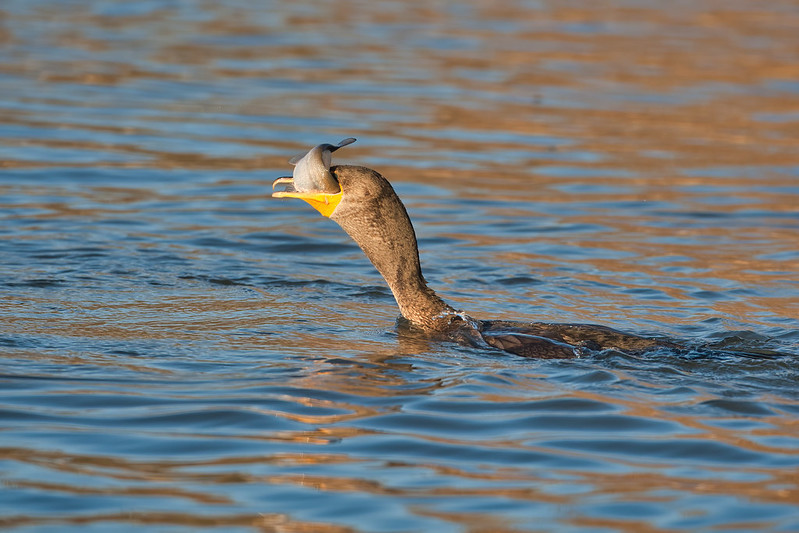At Robert S. Kerr Reservoir near Sallisaw, Oklahoma, a Double-crested Cormorant positioned a shad for swallowing. It had to act fast to get the fish into the right position before swallowing—likely to avoid losing it to the gulls flying above. Within seconds, the cormorant flipped the shad in the air, expertly adjusting its grip before tilting its head back to swallow it whole. This moment showcases how these birds handle their prey with precision.



How I Got the Shot
I was near the dam on the southeast side, sitting among the large rocks at the water’s edge. The air was calm with a light breeze, and the occasional call of gulls echoed overhead as they waited for an opportunity to snatch an easy meal. My tripod kept the camera steady as I tracked the cormorant’s movements.
Gear and Settings
Gear Used:
- Camera: Canon EOS-1D Mark III
- Lens: Canon EF 500mm f/4L IS USM
Camera Settings:
- Mode: Aperture Priority (AV)
- Aperture: f/5.6
- ISO: 640
- Shutter Speed: 1/2000 sec
- Focal Length: 500mm
Observing Cormorants
Cormorants are expert fishers, diving deep underwater with powerful strokes to chase down their prey. They use their sharp beaks to grasp slippery fish, surfacing quickly to reposition their catch before swallowing it whole. Their hunting techniques are always fascinating to watch. This series highlights how they manipulate their catch to swallow it head-first—a necessity to avoid choking on the fish’s spiny fins.
Have you observed cormorants in action? What behaviors have you noticed while they hunt or interact with other birds? Share your experiences in the comments.
